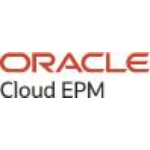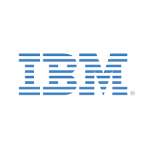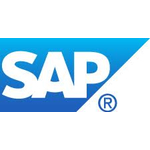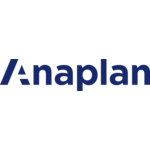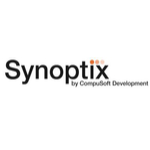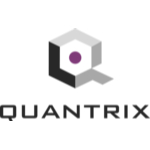TechnologyCounter provides genuine, unbiased real user reviews to help buyers make informed decisions. We may earn a referral fee when you purchase through our links, at no extra cost to you.
List of 15 Best Enterprise Performance Management Software
Showing 1 - 15 of 28 productsOracle Fusion EPM the leading enterprise performance management solution designed to streamline and optimize business processes. This innovative software empowers organizations to drive strategic decision-making, improve financial planning and report...Read Oracle Fusion EPM Reviews
Jedox is a solution for all your data management needs. From budgeting and planning to data analysis and collaboration, Jedox offers a seamless platform to streamline your business processes. With its user-friendly interface features, Jedox is the go...Read Jedox Reviews
IBM Planning Analytics is a software solution designed to transform the way organizations plan, forecast, and make key business decisions. With advanced data analysis capabilities and predictive modeling, this innovative platform empowers businesses...Read IBM Planning Analytics Reviews
SAP Analytics Cloud is a cloud-based solution designed to help businesses of all sizes make more informed decisions through data analysis. It integrates data from various sources, provides real-time insights, and offers collaborative features for eff...Read SAP Analytics Cloud Reviews
Anaplan is revolutionizing the way businesses plan and make decisions, leaving traditional methods in the dust. With its innovative platform, Anaplan empowers organizations of all sizes to streamline their planning processes, collaborate effectively,...Read Anaplan Reviews
Corporater GRC is a software designed to optimize governance, risk, and compliance processes. With its robust features and user-friendly interface, Corporater GRC streamlines business operations and promotes transparency in decision-making. Take cont...Read Corporater GRC Reviews
Valamis is a leading software providing personalized learning and development solutions for organizations of all sizes. With its innovative features and user-friendly interface, Valamis is revolutionizing the way companies train and develop their emp...Read Valamis Reviews
CCH Tagetik, a leading software solution designed to streamline financial processes and drive enterprise performance. With advanced features and robust capabilities, CCH Tagetik empowers businesses to make agile decisions and stay ahead in todays com...Read CCH Tagetik Reviews
Board Business Intelligence provides companies with a powerful platform to analyze and optimize their business strategies. With its advanced data analytics and reporting features, businesses can make data-driven decisions to improve performance and d...Read board Business Intelligence Reviews
OneStream XF is a dynamic financial software solution designed to streamline and enhance your companys financial processes. With its advanced capabilities and user-friendly interface, OneStream XF is the perfect tool for streamlining budgeting, plann...Read OneStream XF Reviews
Solver is the go-to software for tackling complex mathematical problems with ease. Using state-of-the-art algorithms user interface, this innovative tool provides efficient solutions to a wide range of optimization and simulation challenges. With Sol...Read Solver Reviews
Synoptix is a financial reporting and analysis software designed to help businesses gain valuable insights and make data-driven decisions. With its intuitive interface and customizable reports, Synoptix streamlines financial processes and provides ac...Read Synoptix Reviews
Prophix Budgeting is a budgeting solution for businesses of all sizes. With its user-friendly interface features, Prophix allows you to streamline your budgeting process and make data-driven decisions with ease. Experience efficiency and accuracy lik...Read Prophix Budgeting Reviews
Quantrix Modeler is a software that enables users to create and manage complex financial and data models with ease. In todays fast-paced business world, having accurate is a models is crucial for making informed decisions. Quantrix Modeler simplifies...Read Quantrix Modeler Reviews
Workday Adaptive Planning, a revolutionary software that streamlines financial planning and analysis for businesses of all sizes. With powerful tools features, Workday Adaptive Planning helps companies make informed decisions and stay ahead in an eve...Read Workday Adaptive Planning Reviews
- What Is Enterprise Performance Management Software?
- Top Reasons Why Businesses Need Enterprise Performance Management Software?
- What Are the Top Key Features of Enterprise Performance Management Software?
- What Are the Top Benefits of Enterprise Performance Management Software?
- What Are the Steps to Choose the Right Enterprise Performance Management Software?
- What Are the Types of Enterprise Performance Management Software for Different Industries?
- What Are the Technology Trends for Best Enterprise Performance Management Software?
- What Are the Deployment Options for Enterprise Performance Management Software?
What Is Enterprise Performance Management Software?
Enterprise Performance Management (EPM) software is a business intelligence solution utilized for the purpose of effectively managing, quantifying, and evaluating the performance of various company processes. This program is specifically developed to furnish large-scale organizations with data-centric insights that facilitate enhanced decision-making processes and enable companies to maximize their budgets, resources, and operational efficiency.
Enterprise Performance Management EPM software often comprises a triad of interconnected elements, namely budgeting, planning, and reporting. Each component serves a distinct function. The process of planning is crucial for firms as it facilitates the development of budget plans and forecasts, while also enabling the identification of strategies to effectively attain corporate objectives.
The process of budgeting and forecasting facilitates the development of precise financial plans by utilizing existing data. Lastly, the inclusion of reporting tools enables organizations to monitor and evaluate their performance in relation to their predetermined plans and objectives.
In general, the best EPM software offers enterprises of varying scales the ability to access real-time insights. This capability enables them to enhance decision-making processes by leveraging more comprehensive and timely information.
Additionally, EPM software facilitates the optimization of operational activities and the allocation of financial resources. By including sophisticated forecasting and budgeting, planning, and reporting capabilities, top EPM software provides business leaders with the ability to monitor and optimize their operations in a more efficient and effective manner.
Top Reasons Why Businesses Need Enterprise Performance Management Software?
1. Performance visibility: Enterprise performance management software provides comprehensive insights into several dimensions of business operations, encompassing financial performance, operational metrics, customer experiences, and worker engagement.
2. Standardized metrics and KPIs: This program offers a consistent method for assessing performance across various activities and business divisions. The implementation of this practice guarantees that all departments are aligned in their efforts to achieve shared objectives.
3. Improved planning and forecasting: The top EPM software facilitates the enhancement of decision-making processes for corporate executives and managers through the provision of historical data trends and predictive models.
4. Improved decision-making: The availability of comprehensive and detailed data facilitates the process of making well-informed decisions.
5. Automated processes: The best EPM software has the capability to automate labor-intensive reporting procedures, hence reducing the need for manual intervention.
6. Audit trail: The system documents data and captures temporal modifications, facilitating the monitoring of advancements and the identification of potential areas for improvement.
7. Improved collaboration: This program facilitates the rapid and effective sharing of information among many departments.
8. Continuous improvement: By utilizing the data provided by the EPM program, it becomes feasible to identify areas that require enhancement and subsequently implement appropriate modifications.
9. Cost savings: Companies can achieve cost savings by enhancing procedures and eliminating human labor, hence reducing expenses related to data collection, analysis, and storage.
10. Compliance: The utilization of data derived from EPM software facilitates the fulfillment of regulatory and compliance obligations.
11. Increased customer satisfaction: By obtaining enhanced perspectives, organizations have the ability to enhance their customer service offerings and cultivate stronger client loyalty.
12. Better risk management: The capacity to recognize and address financial risk offers a sense of assurance for managers and leaders.
13. Optimized resources: Organizations can enhance resource utilization and adapt swiftly to environmental changes by implementing workflow distribution and automation strategies.
14. Improved customer targeting: By gaining insight into client preferences and habits, organizations may strategically allocate resources towards encounters that yield the most profitability.
15. Faster time to market: By leveraging the supplied insights, organizations can expeditiously discern patterns and design novel strategies to maintain their competitive edge.
What Are the Top Key Features of Enterprise Performance Management Software?
1. Alignment and Accountability: Enterprise Performance Management Software facilitates the allocation and monitoring of crucial performance indicators among many organizational departments, hence promoting collaboration toward the attainment of predetermined objectives.
2. Forecasting and Planning: Contemporary business performance management software facilitates the execution of forecasting and budgeting procedures, enabling organizations to adapt their resource needs and discern potential risks and opportunities.
3. Data Analytics: By utilizing sophisticated analytics methodologies, the software has the capability to assist enterprises in extracting valuable insights from their data and subsequently taking appropriate actions based on those insights to enhance overall performance.
4. Reporting: The program facilitates the creation of comprehensive reports that incorporate informative metrics for monitoring progress and identifying areas for enhancement.
5. Dashboards: Dashboards offer a concise and immediate overview of performance metrics, enabling users to promptly identify areas of concern and initiate appropriate measures.
6. Collaboration: The top enterprise performance management software facilitates the administration of workflows, storage of documents, and provision of performance feedback for users.
7. Governance: The program facilitates proactive risk management within firms by ensuring compliance with all regulations and guidelines.
8. Automation: Automation has the potential to enhance operational efficiency and enhance precision, hence facilitating the prompt delivery of outcomes.
What Are the Top Benefits of Enterprise Performance Management Software?
1. Improved Decision Making: Enterprise performance management EPM software facilitates the expeditious and informed decision-making process for enterprises through the systematic collection and organization of pertinent key performance indicators (KPIs) and metrics.
2. Automated Processes: The implementation of automation is crucial for contemporary enterprises in order to maintain a competitive edge. Enterprise performance management (EPM) software facilitates the automation of intricate organizational procedures, hence allowing for the allocation of time towards tasks of greater significance.
3. Improved Financial Performance: Enterprise performance management systems facilitate the monitoring of financial performance, enable strategic planning for future expansion, and support the implementation of informed decision-making processes.
4. Strategic Planning: The implementation of strategic planning plays a crucial role in determining the success of a corporate enterprise. Corporate performance software has the capability to assist organizations in strategic planning by offering a comprehensive overview of key performance indicators (KPIs) and metrics.
5. Faster Cycle Time: By utilizing appropriate resources, organizations can get enhanced cycle time in addressing consumer demands and enhancing operational efficiency.
6. Analytics and Reporting: Enterprise performance management (EPM) software facilitates the process of gathering and evaluating comprehensive data across an entire organization. This capability allows organizations to monitor their progress, identify areas that require enhancement, and make decisions based on better-informed insights.
7. Comprehensive Insight: Organizations have the potential to acquire significant knowledge regarding their operational effectiveness and enhance their decision-making processes by leveraging the data they gather.
8. Improved Collaboration: Through the enhancement of communication and collaboration, organizations can effectively align all departments with the overarching mission and goals of the firm.
9. Improved Awareness: Enterprise performance management systems ensure that all members of the organization possess knowledge regarding the key performance indicators (KPIs) and metrics that serve as indicators of the organization's overall success.
10. Scalability: The best EPM software exhibits scalability, thereby enabling organizations to derive advantages from their implementation irrespective of their size or level of intricacy.
What Are the Steps to Choose the Right Enterprise Performance Management Software?
1. Clarify the goals and objectives: In order to verify the suitability of the chosen technology for an organization's requirements, it is imperative to establish unambiguous expectations regarding the desired outcomes and objectives of an enterprise performance management system.
2. Review and assess available technologies: Conduct a comprehensive investigation of the currently accessible enterprise performance management systems in order to ascertain the technologies that exhibit the highest degree of alignment with the organization's goals and requirements.
3. Seek input and feedback: Seek feedback from end users, business executives, and IT experts in order to gather a diverse variety of viewpoints regarding the identified technologies and their suitability for the organization.
4. Compare potential systems: Conduct a comparative analysis between the selected Enterprise performance management software and the organization's requirements in order to ascertain which solutions possess the most appropriate features and functionalities.
5. Evaluate user experience: Assess the user experience of the prospective Enterprise Performance Management (EPM) systems in order to discern the ones that exhibit a high degree of user-friendliness and intuitive usability.
6. Consider cost: Determine the comprehensive cost of ownership for the prospective Enterprise performance management tools in order to ascertain the solutions that offer the most cost-efficiency.
7. Develop a proof-of-concept: Employ a proof-of-concept methodology to evaluate the identified Enterprise Performance Management (EPM) systems and assess their efficacy within the organizational context.
8. Choose a system: After conducting a comprehensive evaluation of all the criteria pertaining to the best EPM software, it is advisable to choose the option that best aligns with the organization's requirements and objectives.
What Are the Types of Enterprise Performance Management Software for Different Industries?
There exists a diverse array of enterprise performance management software solutions tailored to cater to the specific requirements and objectives of various businesses.
Typically, these can be classified into the subsequent categories:
1. Financial analytics software: EPM software is specifically developed to assist finance departments in conducting an analysis of corporate performance, identifying patterns or trends, and quantifying financial achievements. Additionally, this practice aids in the cultivation of precise projections and financial plans, as well as the identification of potential avenues for cost optimization.
2. Human resources analytics software: This particular software has been specifically developed to assist human resources departments in conducting an analysis of employee performance within various departments and teams. Additionally, it aids in the strategic planning of human resources and the effective management of talent within an organization.
3. Risk management software: Risk management software is specifically developed to assist organizations in the identification and monitoring of potential hazards that may be linked to their operational activities. This practice assists organizations in monitoring internal audit discoveries and external vulnerabilities, as well as formulating strategies to mitigate such risks.
4. Process management software: Process management software is specifically developed to aid departments in the optimization, streamlining, and automation of business processes. Furthermore, it can be beneficial in identifying areas that require enhancement and reinforcing adherence to regulations.
5. Customer relationship management software: This particular software is specifically engineered to enhance firms' ability to effectively manage their client interactions. Tracking client demands, enhancing customer experiences, and optimizing sales are key factors in achieving business success.
6. Business intelligence software: Business intelligence software facilitates the acquisition, retention, examination, and representation of data for organizations. Additionally, it aids in the evaluation of the effects of various marketing techniques on client acquisition and the identification of operational challenges.
7. Supply chain management software: This particular software is specifically engineered to enhance the overall management of supply chains within enterprises. The utilization of inventory management systems enables organizations to effectively monitor and manage their inventory levels, enhance the efficiency of warehousing and distribution operations, and generate more robust performance indicators.
What Are the Technology Trends for Best Enterprise Performance Management Software?
The prevailing technology developments in corporate performance management software encompass several aspects such as heightened automation, support for mobility, utilization of cloud computing, integration of predictive analytics, incorporation of collaboration tools, inclusion of embedded reporting, and provision of customizable dashboards.
Automation enables the completion of activities in a more efficient and precise manner compared to manual labor. The feature of mobility enables users to conveniently access the software across a range of devices, such as smartphones and tablets.
Cloud computing facilitates convenient and ubiquitous access to software-based data, enabling users to retrieve information from any location and at any given moment. Predictive analytics enables organizations to proactively forecast forthcoming patterns and developments through the examination of historical data.
Collaborative technologies serve to enhance inter-user communication and provide enhanced organizational synergy inside enterprises. Embedded reporting facilitates the generation of reports using software. Customizable dashboards offer customers a user-friendly interface that facilitates efficient access to the required data.
What Are the Deployment Options for Enterprise Performance Management Software?
The deployment choices available for enterprise performance management software encompass a range of possibilities, including on-premise, hosted, cloud-based, and hybrid configurations. On-premise implementation necessitates businesses to procure and implement the software within their own data center.
Typically, this choice is characterized by its high cost and necessitates a certain level of technical proficiency for the installation and maintenance of the software. Hosted deployment necessitates the firm to engage in a rental agreement with a service provider in order to access the software.
Under this methodology, the responsibility for software maintenance, security, and upgrades lies with the service provider. Cloud-based deployment involves the hosting of software on an external cloud computing platform, such as Amazon Web Services, Google Cloud Platform, or Microsoft Azure. This option is the most cost-effective and can be accessed through a pay-as-you-go arrangement.
The hybrid deployment strategy integrates both on-premise and cloud-based technologies. This alternative allows enterprises to retain certain sensitive data within their own premises while simultaneously utilizing cloud-based components to achieve cost savings and scalability.
